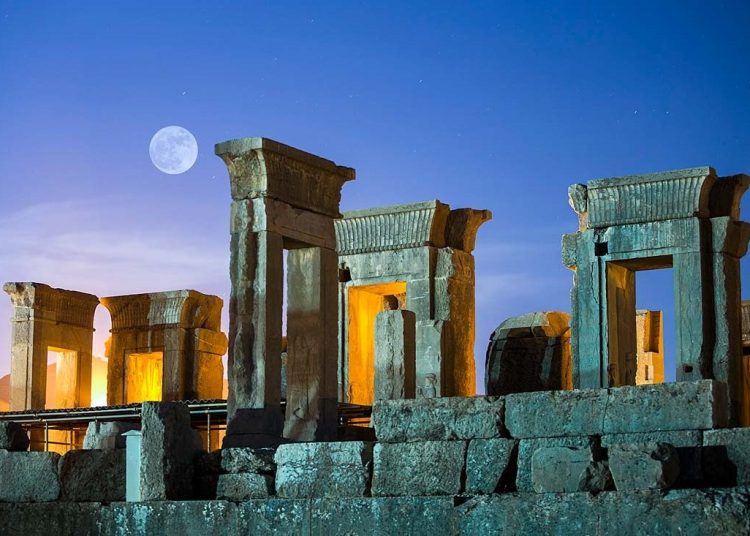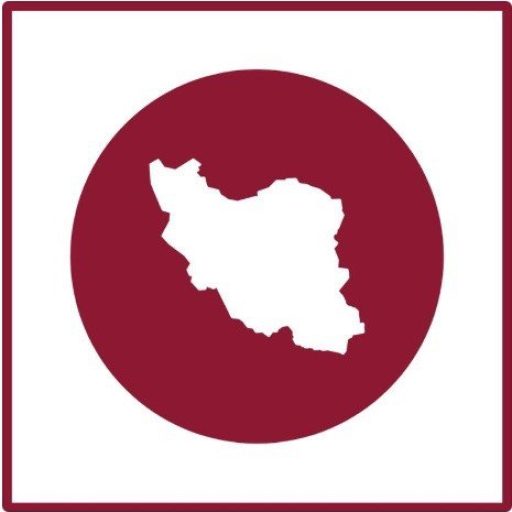The resplendent Achaemenid Empire stretches far and wide, surpassing all previous empires in its vast expanse. With the incredible Indus Valley to the east and the life-giving Nile River to the west, it is a veritable melting pot of cultures, comprising nearly half of the known world. Governing this immense territory requires an adequate capital system, with Persepolis holding the title of the grandest and most significant of the empire’s six capitals. Led by prodigious, benevolent, and noble kings, the Achaemenid Empire’s influence radiates outward, commanding awe and admiration.
Nestled within Iran lies the remarkable UNESCO World Heritage site of Persepolis. Let’s immerse you in the secrets, stories, and architectural wonders of this ancient palace complex.
‘Takhte Jamshid,’ or Jamshid’s throne, is the local name for this heritage site in Iran. Persepolis, which means ‘the city of Pars,’ is also known by other monikers like Sad Sotun (100 pillars) or Chehel Menar (40 minarets). This majestic palace sits 10 kilometers from northern Marvdasht and 57 kilometers from Shiraz, perched on the Rahmat hill. Boasting a width four to five times larger than the Acropolis, Persepolis stretches across an impressive 125,000 square meters (comparable to 15 football fields). Although the precise purpose of Persepolis remains uncertain, it is postulated to have been an elaborate ceremonial complex, particularly for international affairs.
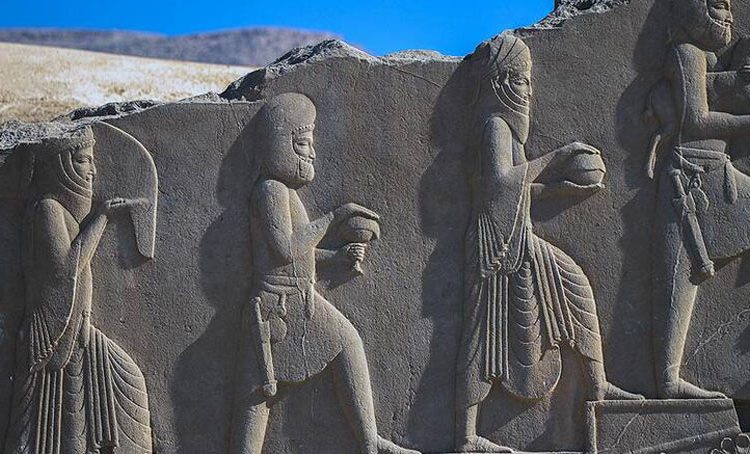
Historical Significance of Persepolis
French archaeologist Andre Godard dated the exquisite structure’s beginnings to 515 BC. Discoveries from tablets within Persepolis unveiled that King Darius I was the first to order its construction, complete with terraces and palaces. Alas, he did not live long enough to witness the fruition of his dreams, as it took 120 years to complete the edifice during King Ardeshir I’s reign.
The Spectacular Construction of Persepolis
It may come as a surprise that, unlike the pyramid builders of Egypt, Persepolis’s workers were not ill-treated. The Achaemenid kings demonstrated an unusual kindness for the era, which is evident in the records and drawings found at the site. Skilled laborers enjoyed job-related privileges such as insurance and regular wages, and provisions were made to care for their families in case of accidents. Astonishingly, even women had the option to work full-time or part-time, and maternity leave was offered with pay—an unheard-of circumstance during that period.
Nevertheless, the saying “nothing lasts forever” holds true for the magnificent Persepolis, and its downfall remains a mystery. One prevalent theory suggests that Alexander the Great set ablaze sections of the city, with the fire eventually spreading throughout the entire complex. This enigma continues to puzzle historians to this day.
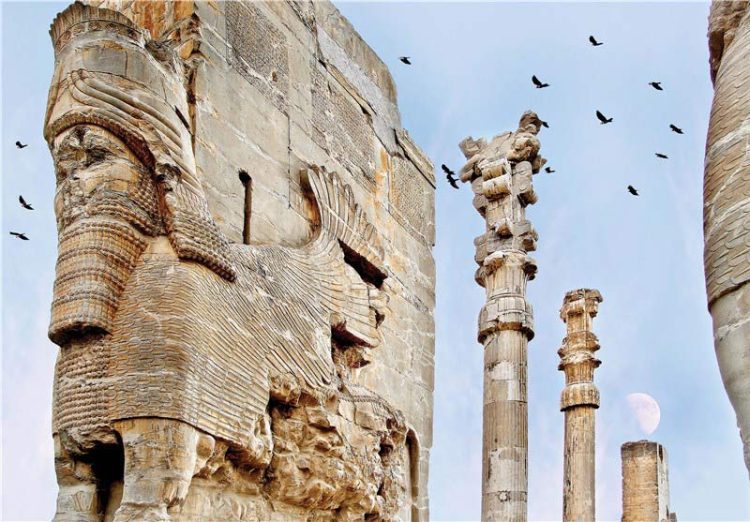
Architectural Wonders of Persepolis
The palace complex’s entrance features an elegant dual stairway, known as the Persepolitan Stairway, comprising 111 shallow steps as a gesture of hospitality for guests. Constructed primarily from gray limestone, Persepolis presents the colossal Gate of All Nations adorned with winged men and stone human-headed bovine sculpture. The inscription “Ahura Mazda made anything that is beautiful” is etched in cuneiform script.
The lotus flower, a symbol of the Persian goddess Anahita, is a recurring motif throughout the complex. Intricate carvings decorate the palace walls, showcasing diverse scenes like military processions, people from various ethnicities in social settings, and animals from across the kingdom. This rich tapestry would have left a lasting impression on foreign guests.
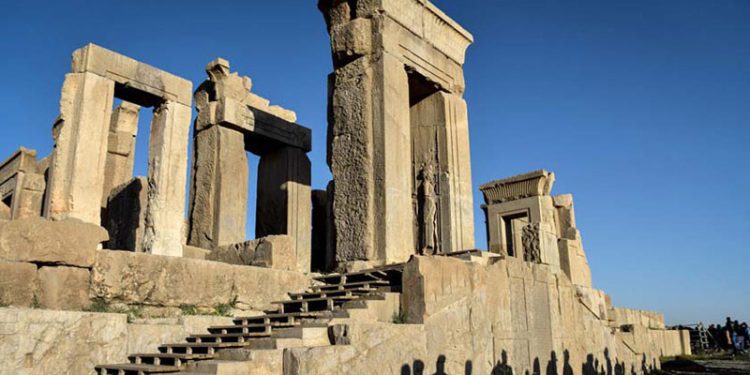
Surprisingly, enormous stones did not constitute the entirety of the structure. A practical approach to constructing pillars and columns involved artfully arranging smaller stone pieces to achieve the illusion of unity. Ingeniously, builders did not use mortar, but rather a unique ‘swallowtail’ fastening to mitigate damage from earthquakes.
Eight palaces await you within the regal grounds of Persepolis, including the Apadana Palace, The Queen’s Palace, Tachara Palace, Showra Palace, Hadish Palace, Se-Dar Palace, Sad Sotun Palace, and H Palace. Step back in time and discover the splendors of this architectural wonder for yourself.

